
Tipping Point – ChatGPT and Assessment
21 Mar, 2024
Like many tools before it, the introduction of publicly available Generative Artificial Intelligence models incited panic, outrage, and reflection in the world of education. It forced many educators to revaluate their assessment methods to account for a tool that can fluently provide an answer to any question, generate written material on any subject, and do so with such convincing quality that it is indiscernible from human output.
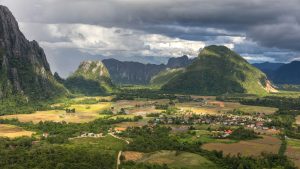
Swidden, Rubber, and Agroecological Possibilities in Upland Laos
7 Feb, 2024
Global food insecurities remain a critical developmental issue with as many as 783 million people facing chronic hunger (World Food Programme, 2023). While the reasons behind food insecurities remain complex, they are bound to deteriorate further if we fail to address the problem of increasing land degradation. Land resources, such as soil, water, and biodiversity, provide the foundation of the well-being of our societies and economies
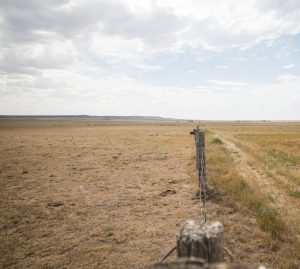
Social and Ecological Dimensions of Restoration through Bison Reintroduction by the Amskapi Piikani
7 Feb, 2024
The case of bison reintroduction by the Amskapi Piikani is an example of species reintroduction to agriculturally degraded lands that revitalizes important social and ecological dimensions that were damaged through settler colonialism and intensified agriculture
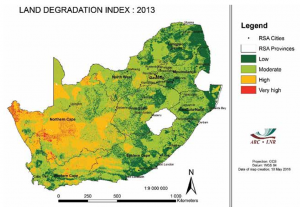
Land Degradation, Agroecological Transformation & Land Rehabilitation in Post-Apartheid South Africa
7 Feb, 2024
Agricultural land degradation and consequent loss of land productivity is a significant challenge in South Africa. This is most severe in rural regions where black South Africans were forcibly relocated through policies of segregation during apartheid. Even after the end of apartheid in 1994, extreme land degradation, agricultural failure, associated poverty, and food insecurity in those regions continued. Multi-level efforts have begun to rehabilitate the the degraded lands through agroecological practices and to address sustainability challenges in the agri-food system.
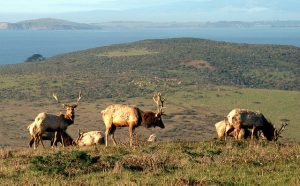
Cleaning Up the Mess: The Problem of Point Reyes National Seashore
19 Dec, 2022
Situated in Marin County, California, Point Reyes National Seashore (PRNS) is a coastal nature reserve maintained by the US National Park Service (NPS). Since the PRNS’ establishment, conflicting management visions of land use have been revealed.
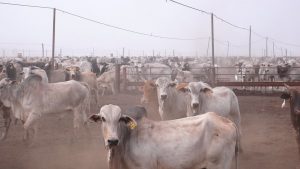
The Novo Campo Project: Transitioning to sustainable livestock agriculture in the Amazon
16 Dec, 2022
The Novo Campo Program, a pilot program involving six cattle farming properties attempts to address some of the problems experienced in conventional beef cattle farming in Mato Grosso, Brazil.
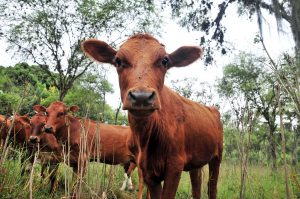
Intensive Silvopastoral Transitions in Colombia’s La Vieja Watershed
16 Dec, 2022
In order to support global-to-local food security, achieve environmental stability, and overcome the negative outcomes driven by conventional agriculture, food systems require fundamental and widespread sustainable transformation.

An Agroecosystem on the Rocks: The Perfect Cocktail for Extinction
16 Dec, 2022
Due to the large size of the tequila industry and the ever-increasing demand for tequila, Agave production use use genetically limited, monocultural techniques, including vegetative propagation.

Behaviourism
7 Sep, 2022
Every other word uttered by students is a swear and they are incredibly disrespectful toward themselves, each other, the teacher, and the physical environment. One student is so keen on being in the room that they won’t let the teacher talk without interrupting with questions. Three other students keep talking to their neighbours and distracting them regardless of how many times the teacher waits for silence (which ends up about 25 minutes the first time on the first day).
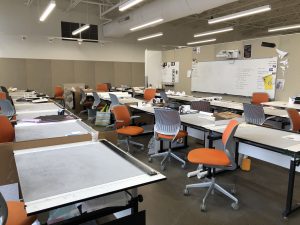
Social and Emotional Learning
7 Sep, 2022
When the Truth and Reconciliation Calls to Action came out, Ms. Miller’s school was required to teach all students, of all ages, about the truths of Indian Residential Schools (IRS). Orange Shirt Day was coming up fast and Ms. Miller and her colleagues (mainly white teachers) struggled with what and how to teach in this area, having limited experience and knowledge about IRS.

Diversity, Equity and Inclusion
7 Sep, 2022
I am a motivated teacher candidate in the Middle Years cohort, ready to support inclusion and diversity! Yet, I don’t feel completely confident engaging with decolonizing and anti-racist possibilities. I have been assigned to teach a grade 7 class and am thinking about how I can use inclusive and diverse teaching resources. I asked for advice from my School Advisor (SA).

Bullying Prevention
7 Sep, 2022
Mina is a teacher candidate in the first semester of her program. She visits her practicum classroom once a week on Thursday in a school where 56 languages are spoken by children and their families. She did not grow up in this community, but is excited to learn. She recently moved to British Columbia and most of her education in K-12 was in a private school where students and families shared many religious and cultural values, language, and mores. Her parents are both professionals and encouraged her desire to become a teacher. Her practicum school is a middle school (grades 6-8) and she will be teaching core subjects in a grade 7/8 multiage classroom.
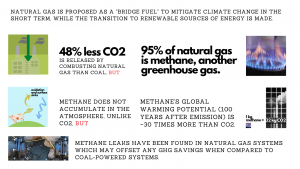
Liquified Natural Gas: Dream Fuel or Pipe Dream?
8 Mar, 2022
In a 2021 course report, the graduate students analyze how Canada, and more specifically the province of British Columbia, have pushed for the development of LNG infrastructure.

Strategic Planning: Non-Profit Request for Proposal Activity Case
8 Feb, 2022
Laurier Students’ Public Interest Research Group (LSPIRG) is a non-profit organization funded by student fees operating at Wilfrid Laurier University. In this case study, students will create an RFP scoring system to evaluate submissions and select the best proposal from two choices.

Product Endorsement
21 May, 2021
Anita is a recent graduate of the UBC Doctor of Pharmacy (PharmD) Program. She was a high-achieving student during her time at UBC, and was well-liked by her peers and professors.

Good Intentions Gone Away
21 May, 2021
Devon has been working at GCH for 6 months, and has thrived in this fast-paced environment. Devon especially enjoys having the opportunity to collaborate inter-professionally with physicians, nurses, physiotherapists, social workers, and the rest of the patient care team.

Viral Venting
21 May, 2021
Sarah is in her second year of the Doctor of Pharmacy (PharmD) program. For the past 2 months she has been working part-time at “Canada Plus Pharmacy” in Vancouver to help offset the high costs of being a student.

Screenshot in a Small Town
21 May, 2021
Kai has recently begun their 8-week pharmacy practicum at an outpatient pharmacy in a small town in inland BC.Coming from Vancouver, they are a bit apprehensive about the placement, and feel a little lonely and isolated.

Microagressions in the Online Classroom
21 Jan, 2021
This is a collection of scenarios that illustrate microaggressions in the online classroom. These scenarios were created by a diverse group of undergraduate students at UBC.
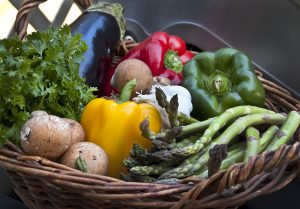
Just Food Project: Facilitator Toolkit
17 Nov, 2020
Dear food justice educator,We believe that a critical part of engaging in food justice pedagogy is centering equity in our teaching practice. While there are limits to the scale and scope we can enact change in our classrooms, we as students and instructors strive to uphold equitable guiding principles, outlined in this guide.
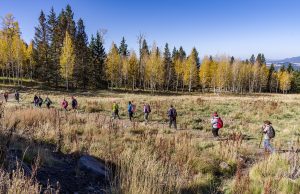
Just Food Project: Food Justice Primer
17 Nov, 2020
Food justice represents “a transformation of the current food system, including but not limited to eliminating disparities and inequities” that constrain food choices and access to good food for all.
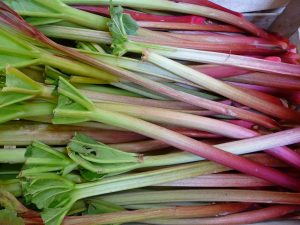
Just Food Project: Diasporic Foodways
17 Nov, 2020
“First you lose your costume. Then you lose your language. The last thing that you lose is your food.” – Patricia Klindienst.This quote is drawn from a chapter titled ‘Place’ (Chapter 3) in the book, The Earth Knows My Name, where a Polish American vintner and a Japanese American berry farmer speak to the complexities around land ownership, cultivating food and immigration.
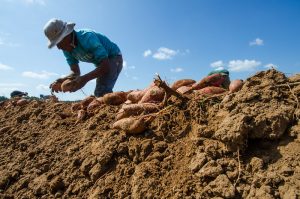
Just Food Project: Migrant Labour
17 Nov, 2020
When we think about labour and food, who are the faces that appear in our minds? Developed country’s food systems rely on a racialized workforce where BIPOC bodies represent the majority of low wage, low skill, high risk jobs. This includes both immigrant and migrant labourers in meat-packing/food processing plants, farms and fast-food restaurants.[8] This module primarily focuses on a Canadian context and employs migrant labour as a way of unpacking key concepts in labour, racializing processes, and food systems.

Just Food Project: Local Food Movement
17 Nov, 2020
This case study will guide learners to think critically about the local food movement, who it benefits, excludes, and its potential to transform the food system.
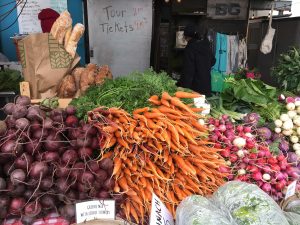
Just Food Project: Food Systems Governance
17 Nov, 2020
This case study is intended to be a starting point for exploring food systems governance with a focus on the growing role of philanthropic organizations in international agricultural development.
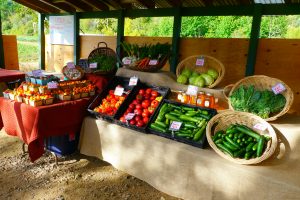
Just Food Project: Gender, Equity and Food Security
17 Nov, 2020
This case study explores relationships between food, gender and social justice through feminist and queer lenses. Food insecurity disproportionately affects womxn, trans, queer, and non-binary people.
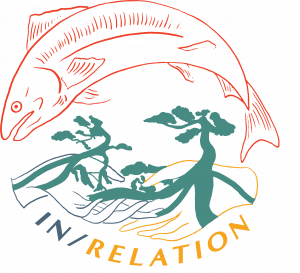
In/relation: Developing Guidelines to Navigate Complex Classroom Dynamics
2 Sep, 2020
This case study explores complex classroom dynamics involving International and Indigenous learners speaking from their own experiences and positionalities.
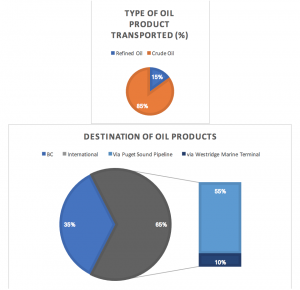
Trans Mountain Pipeline Expansion Project
3 Apr, 2020
This case centres on the Trans Mountain Pipeline and Expansion Project (Trans Mountain) as a lens through which to learn about Canadian environmental assessment processes.
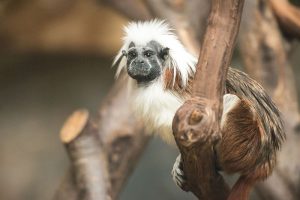
Assessment of community conservation strategies for the critically endangered cotton-top tamarin, (Saguinus oedipus) in Atlantico and Bolivar, Colombia
12 Feb, 2020
This case study explores Proyecto Tití’s cotton-top tamarin (Saguinus oedipus) conservation program in Atlantico and Bolivar, Colombia.
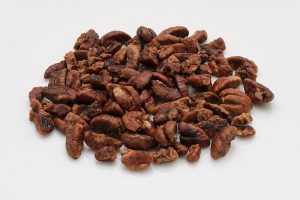
Community management of Chinese hickory (Carya cathayensis) on Tianmu mountain, Zhejiang province, China
12 Feb, 2020
This case study focuses on community management of an Chinese hickory forest in Tianmu Mountain area, Zhejiang province, China

Mayan community forest reserves (MCFR) as a global model for sustainable landscapes: a case study of Quintana Roo, Mexico
12 Feb, 2020
This case study will look at the different forms of ejidos in Quintana Roo, Mexico, and analyze which form is the most optimal for promoting biodiversity, conservation, and overall benefits for Mayan communities.
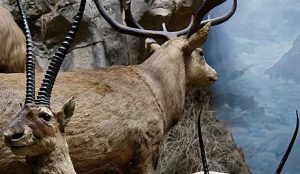
An Assessment of the Environmental and Social Processes in the Protection of the Tibetan Antelope (Pantholops hodgsonii) in Hoh Xil National Nature Reserve, Tibetan Autonomous Region, China
12 Feb, 2020
This case study assesses the environmental and social processes that were set into train in the protection of the Tibetan antelope (Pantholops hodgsonii) in Hoh Xil National Nature Reserve, Tibetan Autonomous Region, China.

Community resources management, including the role of gender, in Maku Walled Village, Ma’andi Township, Jinping Autonomous County, Yunnan Province, China
12 Feb, 2020
This case study examines Maku Walled Village, Jinping Autonomous County, Yunnan Province, China.
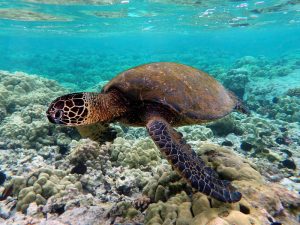
Community-Based Management of Marine Protected Areas in the Fishing Villages of Kubulau District, Vanua Levu, Fiji
5 Feb, 2020
This case study analyzes the establishment and adaptive co-management of marine protected areas (MPAs) in the fishing villages of Kubulau District, Vanua Levu.

The Emergence of Etosha National Park in Namibia and its Impacts on the Hai//om People
5 Feb, 2020
Located in the northwestern part of Namibia — a country in southern Africa with a sophisticated, profound historical past in colonialism — Etosha National Park sits on the Etosha Pan: the traditional land of the Hai//om people.
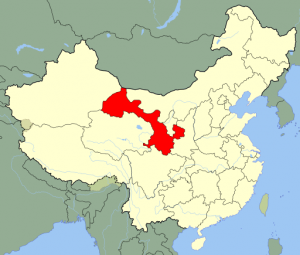
Community-based Co-management of Forest Resources in Baishuijiang National Nature Reserve, Gansu, China
5 Feb, 2020
Baishuijiang National Nature Reserve has special geographical location and and cultural environment so it becomes the habitat of many endangered species.
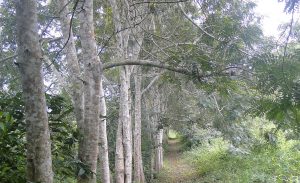
The impact of the modified taungya system on Ghana’s forests – Relatively positive, or otherwise?
4 Feb, 2020
Deforestation and forest degradation in Ghana has been on the forward trajectory from the colonial era until date.
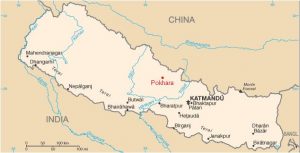
An exploration of women’s roles within community forestry in Nepal
3 Feb, 2020
This case study assesses the roles women play in community forestry in the country of Nepal.

Assessing the management of moso bamboo (Phyllostachys edulis) forests by collective economic organizations in Linan, Zhejiang Province, China
3 Feb, 2020
Since the reform in property rights and opening up in 1980, Linan City has chosen to vigorously develop the bamboo industry from the very beginning to promote the transformation, development, and upgrading of the bamboo industry in the 21st century.

Traditional culture and community forest management in Hani village, Yunnan, China
3 Feb, 2020
The case study focuses on the community forestry in Mengsong Hani Community, Yunnan Province of China. It uses a variety of documentation to clarify the traditional management and natural resources conservation of the Hani Ethnic Minority.
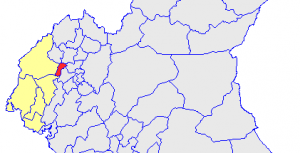
Conflict Between Great Apes Conservation and Indigenous Communities’ Livelihood in the Lebialem-Mone Forest Landscape, Cameroon
3 Feb, 2020
The Lebialem–Mone Forest landscape is located in southwestern Cameroon with valuable resources and several endangered species, including the Critically Endangered Cross River gorilla (Gorilla gorilla deilhi) of which less than 300 remain in the wild
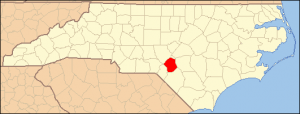
Management of Hoke Community Forest for Conservation, Environmental Education and Economic Welfare in North Carolina, USA
3 Feb, 2020
This page examines the first southeastern USA community forest located in Hoke County, North Carolina. Hoke Community Forest is a 532 acre piece of land dedicated to and managed for conservation, environmental education, and economic welfare.
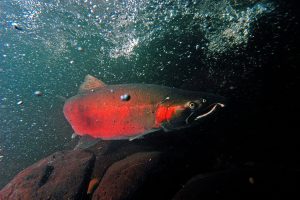
Qwuloolt Estuary: Co-management efforts to restore the Snohomish River Floodplain in Washington State, U.S.A
3 Feb, 2020
This case study examines the Qwuloolt Estuary within the Snohomish River Floodplain in Marysville, Washington, U.S.

A contemporary exploration of Native Hawaiian preferences, practices, and involvement in ocean and land management (Hawaii, USA)
3 Feb, 2020
The holistic values of Hawaiian culture are based on ho’olokahi; to bring unity and harmony among humanity, nature and spiritual forces.

Impacts of the Establishment of Pudacuo National Park on the Neighbouring Communities in Yunnan, China
3 Feb, 2020
This case study mainly focuses on Pudazou National Park, Yunnan Province, China. It uses documents to explore the benefits of the establishment of the national park, but also a series of conflicts with neighboring communities.

Applications of Payment for Ecosystem Services in Aceh, Sumatra, Indonesia
31 Jan, 2020
This case study examines the potential applications of Payment for Ecosystem Services (PES) in Aceh, on the island of Sumatra, Indonesia.
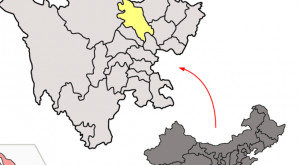
A coordinated approach to poverty alleviation and ecological conservation in Pingwu County, China
31 Jan, 2020
This case study examines the ecological poverty alleviation in Pingwu county, northwest of Sichuan basin, China, using multiple references to explore the methods of coordinating poverty alleviation and ecological protection in Pingwu county, China.
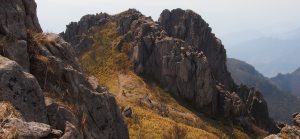
Collaborative management of Qingliang mountain, Hangzhou,China
31 Jan, 2020
Qingliang Mountain nature reserve was approved in 1982. Since 1950, the collectivization of land in China was carried out, and then all the land and natural resources were owned by the citizens of China and administered on their behalf by the government.
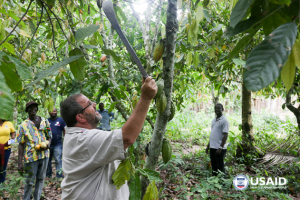
Exploring the cocoa tree decline in Nyame Nnae, Ghana and the complications of tree/land tenure that smallholder farmers are facing
30 Jan, 2020
This case study is about Nyame Nnae, a village in western Ghana, a part of the Asankrangwa District. Asankrangwa is a stool (Indigenous group) that owns the land customarily in their district
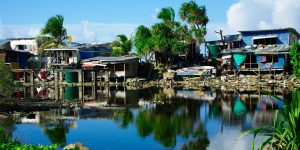
Climate refugees in Tuvalu: transferable lessons from the multi-stakeholder processes of community forestry
29 Jan, 2020
Climate change is a major concern for nations within the Pacific Ocean. Low-lying countries, such as Tuvalu, are some of the most at risk for facing the realities of climate change.
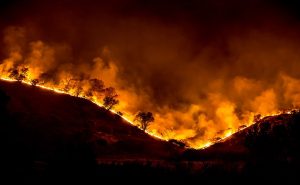
Fighting Fire with Fire by the Karuk Tribe: Traditional Ecological Knowledge and Wildfire Management
27 Jan, 2020
The Karuk Tribe has been occupying its traditional land for centuries in the middle section of the Klamath River in California. This case study is about struggle between the U.S. Forest Service and the Karuk Tribe as it tries to reintroduce its management practices over its traditional territory.
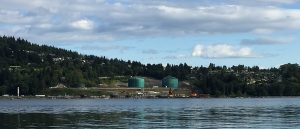
The Alberta to British Columbia Trans Mountain Expansion Project
27 Jan, 2020
The Trans Mountain Pipeline Expansion Project is controversial as it may potentially have adverse effects environmentally, economically, and socially. The Tsleil-Waututh community voted to oppose the Expansion Project in a pioneering example of First Nations acting on their authority to review and decide whether a project should proceed in their territory.

Roles and impacts of stakeholder networks on Europe’s Natura 2000 programme
27 Jan, 2020
The European Ecological Network called Natura 2000 is the world’s largest multinational-coordinated conservation infrastructure of protected areas. It is governed by a science-based top-down supranational legislative framework which sets similar conservation objectives across the Member States.
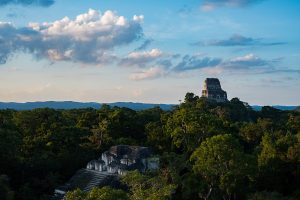
Community Forest Management in the Maya Biosphere Reserve
27 Jan, 2020
Petén was considered the last agricultural, immigration, and geopolitical frontier of Guatemala by the 1990s. Today, it holds 30% of the country’s maize production and 20% of the nation’s cattle production.
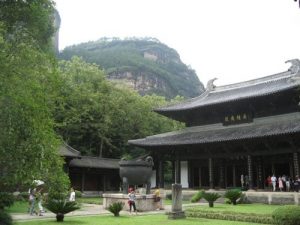
An Assessment of the History and Stakeholders’ Involvement in Heritage Tourism in Wuyi Mountain, Fujian, China
27 Jan, 2020
This case study is about Wuyi Mountain in Fujian province, China, and covers the development of tourism in since the tenure reforms and opening up of China, beginning in 1978.
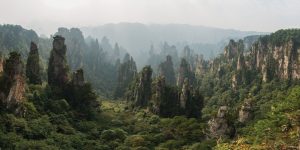
Conservation of Zhangjiajie National Forest in China: protection or exploitation
27 Jan, 2020
Zhangjiajie park accounts for 27.67% of the total tree species in Hunan province. Forests have become a significant source of revenue for the nation as more tourists visit the forests. The number of tourists and revenue have increased by 20% and 43.6% annually.
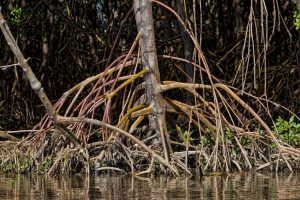
Community based co-management of mangrove forest in Dongzhaigang National Nature Reserve, Hainan province, China
27 Jan, 2020
The establishment of this nature reserve has made important contributions to the restoration of mangrove wetland, biodiversity conservation and disaster prevention and mitigation.
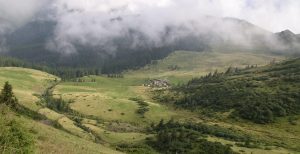
The shift towards bottom-up forestry: A case study of the Ukrainian Carpathian Mountain range communities
27 Jan, 2020
This case study explores the overall systems of tenure, administrative arrangements and various stakeholder groups that are involved in the Ukrainian Carpathian Mountain forested regions between 1991 and 2014.

Why the struggles of the Shuar Indigenous People in Ecuador to conserve their culture are key to local conservation
27 Jan, 2020
The Shuar were the first Indigenous people in Latin America to establish a formal indigenous organization, serving as an example to indigenous groups all over the region fighting for their territories.
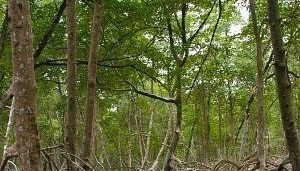
The Mangrove Ecosystem, Ucides cordatus, and the Local Economy in the Caeté Estuary, Northern Brazil
27 Jan, 2020
This study investigates the mangrove ecosystem of the Caeté Estuary in Northern Brazil. It explores the complexity of the ecosystem, the local populations’ primary food resource – the mangrove crab, and economic issues arising from environmental degradation
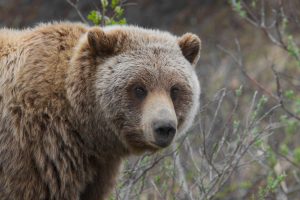
The history and divergent views on grizzly bear hunting in British Columbia, Canada
27 Jan, 2020
In 2018, the government of BC declared a trophy hunting ban for all non-First Nations on grizzly bears due to their threatened status in the province.
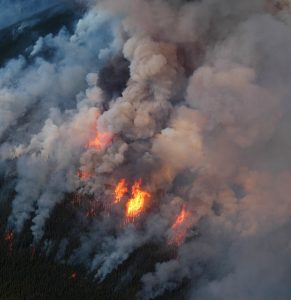
Wildfire Management in the Province of Alberta, Canada: Then, Now and the Future
27 Jan, 2020
The Indigenous peoples of what is now Alberta, Canada have been using fire as a tool to shape the landscape and its resources since time immemorial.
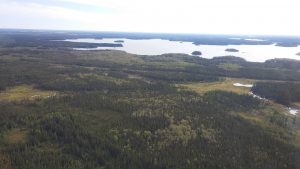
The Opportunity for Indigenous Community Forestry in Manitoba, Canada
27 Jan, 2020
In Manitoba, Canada, expanding indigenous community forestry could one day be a framework for inclusive and equitable forest management in the province and beyond.
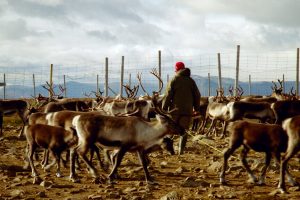
Land conflicts and negotiation processes between Sami reindeer herders and the forestry sector in northern Sweden
27 Jan, 2020
This case study is about consultations and land-use conflicts between the Indigenous Sami people and the forestry sector in northern Sweden.
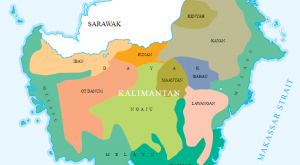
Community-based Fire Management in East Kalimantan, Indonesia
27 Jan, 2020
This case study examines the community forestry management approach to the forest fires in East Kalimantan, Indonesia. It explores the current tenure system with the legal and illegal methods of deforestation used annually, encompassing the various stakeholders that are involved, including the government and the indigenous community, and the transition into community forestry in the East Kalimantan region.
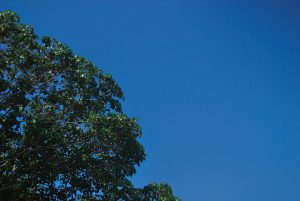
Assessing non-timber forest products’ use in Vandeikya Local Government Area of Benue State, Nigeria
27 Jan, 2020
Globally, about 1.6 billion rural people’s livelihoods depend fully or partially on products derived from local forests, these people live within or adjacent to the forest and have relied on these wild and natural resources to meet their basic needs for survival and livelihoods for many generations.
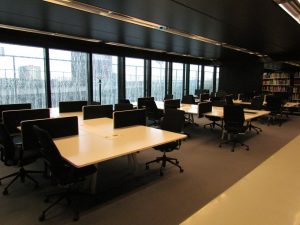
Building Trans-Inclusive Learning Spaces: Considerations for Instructors and Teaching Assistants
24 Jan, 2020
You are teaching an introductory biology course with a team of four Teaching Assistants (TAs) who each lead multiple lab sections. One of your TAs, Rachel, approaches you because she has heard from one of the other TAs, Grey, that they are struggling with one of their lab sections. Grey identifies as non-binary and uses “they/them” pronouns but some students repeatedly use “she” during one lab section despite some reminders and gentle corrections.

The 2015 European Refugee Crisis
17 Oct, 2019
In 2015, a record 1,005,504 asylum seekers and migrants reached Europe in search of security and a better future. That same year, almost 4,000 people went missing in the trajectory to Europe, with many presumed to have drowned in the Mediterranean. Fifty percent of people came from Syria, followed by Afghanistan and Iraq. Most people landed on the shores of Italy and Greece, while others trekked from Turkey, through the Balkan states, into Hungary. The majority of refugees and migrants aimed to go to northern and western Europe, particularly Germany and Sweden, where reception and support facilities were deemed to be better. These countries were already home to family and community members of the countries of origin, which asylum seekers hoped would facilitate integration.
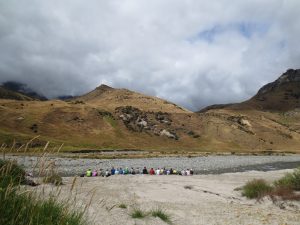
Who belongs in the outdoors doing fieldwork?
2 May, 2019
You teach a first year geology course. A program advisor in your department comes to you with a concern that was brought up by a female student in your course. According to the program advisor, the student is really enjoying the course and has decided she wants to major in geology. However, she doesn’t feel that she “belongs” in the discipline…

Writing as the test of knowledge?: Towards more inclusive course design
2 May, 2019
This case study scenario illustrates a common missed step in course design, especially among instructors who were trained in disciplines that traditionally rely on one particular form of assessing student learning (in this case, writing). One of the key guiding principles of learner-centred course design is to align three features of a course…

What I Learned In Class Today
2 May, 2019
You are teaching a second year political science class. At the start of each class, you open with a short discussion topic on relevant news in the media and its’ impact on Canadian politics as a way for your students to apply theory to practice. A student in your class, Karen, brings up the two verdicts of Colten Boushie and Tina Fontaine and how these two verdicts have been all over her social media…

Forest Resource Management in Harrop-Procter Community Forest, BC, Canada
3 Mar, 2019
Harrop-Procter Community Forest (HPCF) is located in the small communities of Harrop and Procter in southwestern British Columbia (BC), Canada. It covers 11,300 hectares of Provincial Forest Crown land…
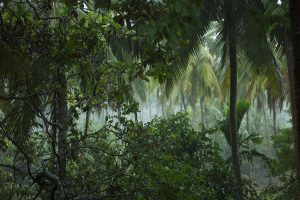
Forest management in Ban Thung Yao Community in Thailand
3 Mar, 2019
Ban Thung Yao village is located in the Lamphun province of Northern Thailand. Members of the community have been managing the forests since their settlement in 1915. They depend on the forest to extract both …
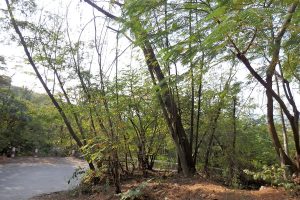
The contribution of community forest to Yoe Sone Community Forestry, Wan Twin Township, Mandalay Region, Myanmar
3 Mar, 2019
Yoe Sone Community Forestry, located at Dry Zone Region of the Myanmar, had become a successful model of the country because of its improved livelihood and sustainable …
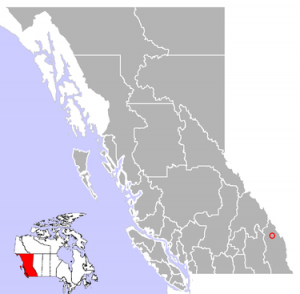
The Ktunaxa First Nations versus the proposed Jumbo Ski Resort: customary claims versus the Province of BC, Canada
3 Mar, 2019
n 1991, Glacier Resorts Ltd. submitted a proposal for the development of the Jumbo Glacier Resort, a year-round…
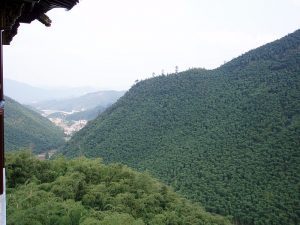
The implications for forests and people of the tenure changes in Longquan, Zhejiang Province, China
3 Mar, 2019
A long period of poor life forces central governments make a change and Longquan get the chance become better. After hard exploration, the new policy: Household plots and …

Community-based forest management: the collective forest tenure reform in Jiewen village, Fujian province, China
11 Jan, 2019
This case study examines the community-based forest management and the collective forest tenure reform in Jiewen village, Wuping county, Longyan city, Fujian province, China.
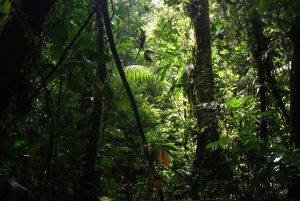
Assessing the management of Awa communal lands by the Awa Federation of Ecudor
10 Jan, 2019
The Awá, an indigenous nation whose traditional territory extends across the border of the modern-day nation-states of Colombia and Ecuador, have been working for decades to preserve their traditional way of life, as well as the lands and waters…
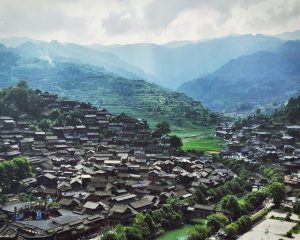
The community forests managed by the Miao People in Guizhou Province, China
10 Jan, 2019
The Miao nationality is an ancient nation scattered throughout the world, mainly distributed in China’s provinces such as Yunnan, Hunan, Hubei, Sichuan, Guizhou, Guangxi, as well as Laos, Vietnam, Thailand and …
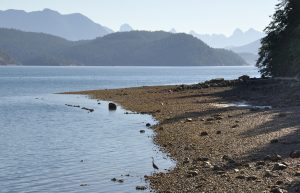
An assessment of the Cortes Forestry General Partnership (CFGP) of BC, Canada: a joint Indigenous and non-Indigenous community forestry association
10 Jan, 2019
The Cortes Forestry General Partnership is an equal partnership between the Klahoose Forestry No.2 Limited Partnership and Cortes Community Forest Cooperative, which has …
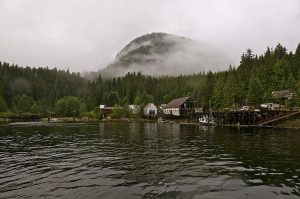
The Great Bear Rainforest: K3H in British Columbia, Canada
10 Jan, 2019
K3H is an area of forest currently under a community forest license issued to the Nuxalk Nation. It is located near Bella Coola in the central coast of British Columbia. The K3H license features a …
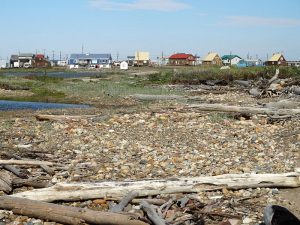
The Cultural and Conservation Significance of Anguniaqvia niqiqyuam Marine Protected Area (MPA), North West Territories, Canada
10 Jan, 2019
This case study examines Anguniaqvia niqiqyuam (Ung-u-niak-via Ni-kig-e-um) MPA, which was officially designated a Marine Protected Area by …
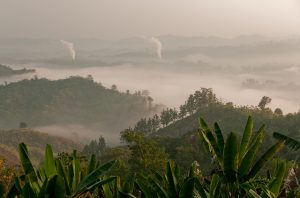
Chakma Tribal Forest Management in the Chittagong Hill Tracts of Bangladesh
10 Jan, 2019
The Chittagong Hill Tracts (CHT) consist of 3 districts in the southeastern part of Bangladesh- Khagrachari, Banderban and Rangamati. Half of Bangladesh’s populations are tribal people with the other half being mainstream Bengali…

Ecosystem services and management of Long Forest created by Dai Indigenous People in Xishuangbanna, China
10 Jan, 2019
This is a case study of community forestry on the Dai community in Xishuangbanna, which is an ethnic minority in China. Dai people have unique water cultures relying on the forest …
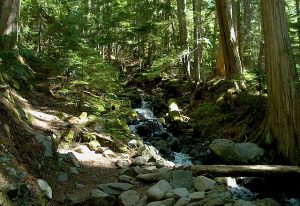
Progression of Community Forest Agreements in British Columbia through Social and Political Pathways: A study on the history of CFAs with context from a specific coastal case
9 Jan, 2019
Community forestry has conceptually, and in practice, existed globally for centuries. State-recognized …
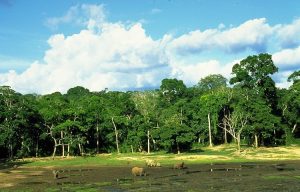
Exclusion of the Baka People’s Involvement in Forest Management in the Sangha Trinational Landscape of Cameroon, the Central African Republic, and the Republic of the Congo
9 Jan, 2019
The Sangha Trinational Landscape (TNS) is nestled in the heart of the Congo Basin. It is home to the Baka and Aka, among many other peoples, where they have lived …
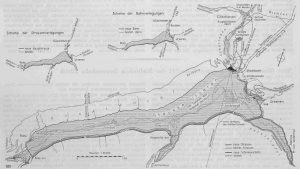
Community-based management of alpine pastures and resources in the valley of Ursern, Switzerland
9 Jan, 2019
This case study examines the community management of alpine pastures and resources in the valley of Ursern in central Switzerland. Over 90 % of the land in the valley is owned by…
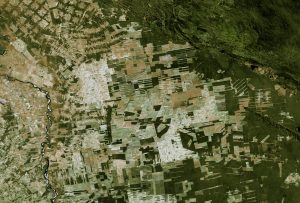
Co-management of Community Forestry in the Guyanos Indigenous Territory, Santa Cruz, Bolivia
9 Jan, 2019
Bolivia is one of the most ecologically and biologically diverse countries in the world, due to most of half of its territory (131 million acres) is forested area. With most of Bolivia’s land being forest covered area, indigenous …
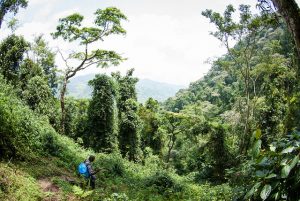
An Assessment of the Land Claims and Rights of the Ogiek (Muthoni Wanyeki) in the Mau and Mt. Elgon Forests of Kenya
8 Jan, 2019
Focusing on human rights and land claims of the local community that resides in the Mau Forest, this paper aims to analyze their struggles to gain customary land rights. The government demanded …
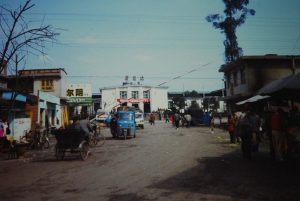
Tourism and the Involvement of Local Peoples in Huangwanxiang, Emeishan City, Sichuan Province, China
8 Jan, 2019
In many remote mountainous areas in China, their development is far behind that of cities due to the geographical location. For them, tourism is an important

The Canadian Government’s Response to the 2015 Syrian Refugee Crisis
12 Sep, 2018
The war in Syria broke out in March 2011, while many countries in the Middle East and North Africa experienced mass demonstrations and uprisings that became known as the Arab Spring. The protests in Syria were triggered by the arrest and torture of a group of students who put up anti-government graffiti. One of the students, a 13-year-old boy, was killed after having been tortured.
Dove’s “Real Beauty” Campaign: Body Positive Promotion or Genderwashing?
12 Jul, 2018
This case discusses the rapid growth of the now controversial “positive body image” promotional strategy, that some have suggested is “genderwashing,” whereby firms may engage with progressive gender and race issues in one brand’s promotional campaign while creating perceived contrary campaigns with that of other brands or campaigns that don’t seem to fit the body positive narrative.

I’m for equity and inclusion, but…
17 Jun, 2018
In response to the Provost’s commitments to the Intersectional Gender-based Violence and Aboriginal Stereotypes (IGBVAS) Task Force Report, CTLT has created Equity and Diversity Working Group (EDWG) to support the Task Force’s goals through CTLT’s programs and services and for internal capacity development within CTLT.

What’s in a name?
13 May, 2018
Your colleague, Sam Smith, who works in Science Advising, comes to you to for advice on how to get one of his students, Njoki Wane, more engaged. He tells you the story of the first time he met Njoki. He was unsure how to pronounce the student’s name.

Inappropriate Class Comment
13 May, 2018
Ray is a student who is part of a peer-coaching group. They are concerned because an instructor in their ECON class made a disparaging remark about Africa and ‘third world’ countries draining the world economic system.

Language skill requirements and career navigation
13 May, 2018
A student you know, Sampson, comes to you asking for advice on a new career trajectory. As part of your conversation, he shares that he’s concerned about his accent.
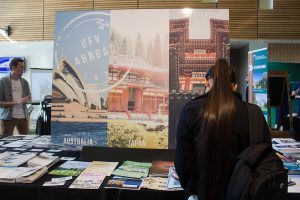
Advising International Exchange Students
13 May, 2018
In your work with students who study abroad, you have noticed that some of them return with impactful experiences around privilege and discrimination from the time in their host country. Usually, they speak about these themes by positioning themselves as a foreigner in the host country.
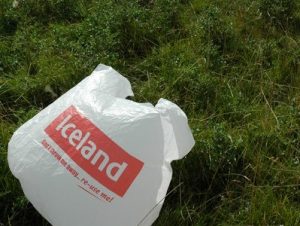
Ecological and social costs of single use plastic bags
29 Apr, 2018
Following the rise of the industrial revolution, single-use plastic bags have become a common household item and appear in nearly every restaurant and store as a convenient way for consumers to carry purchased goods…

Ecological and social costs of single use coffee cups
29 Apr, 2018
A change in consumer behavior is increasing demand for coffee and single-use coffee cups, which has become a significant concern for our environment. Every year billions of single-use coffee cups are being used and thrown into the landfill,…
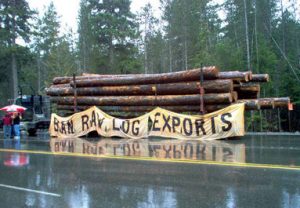
Environmental, economic and social benefits and drawbacks of British Columbia’s raw log exports
29 Apr, 2018
Located in a country that encompasses 9% of the world’s forests, British Columbia is the westernmost of the 10 provinces in Canada. The province has some 60 million hectares of forest land,…
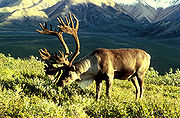
Logging versus the Wells Gray Provincial Park and its iconic herd of southern mountain caribou in British Columbia, Canada
29 Apr, 2018
Wells Gray Provincial Park is located in central-eastern British Columbia and is part of the southern mountain caribou’s habitat…
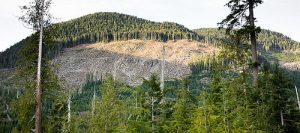
Caribou, Logging, Wolves and Corporate Donors in British Columbia, Canada
29 Apr, 2018
Caribou populations in British Columbia are declining and facing endangerment due to habitat alteration caused by logging operations and other human activities. Caribou (Rangifer tarandus caribou) exist primarily in British Columbia as woodland caribou…
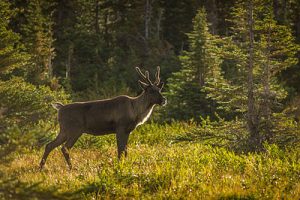
Canada’s Species At Risk Act (SARA) and the woodland caribou
28 Apr, 2018
The Species at Risk Act (SARA) is a federal legislation passed in 2002 and was enacted in 2004. Its main objectives are to “prevent endangered or threatened species from becoming extinct…
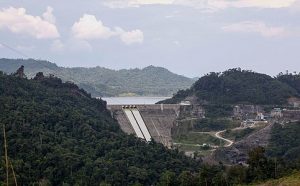
The situation of the Penan and Kenyah Indigenous Peoples vs the construction of the Murum Dam in Northern Sarawak, Malaysia
28 Apr, 2018
The Murum Dam is located in Sarawak, Malaysia. The dam is 141 meters tall and 473 meters long…
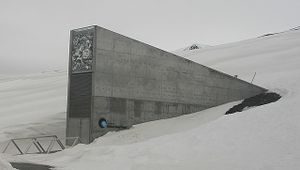
The Svalbard Global Seed Vault
28 Apr, 2018
The Svalbard Global Seed Vault is a secure seed bank built on the Arctic Svalbard Archipelago in Norway, the furthermost north location habitable and reachable by commercial airplanes. It was built in 1984 in a repurposed abandoned coal mine…

Drivers and consequences of industrial-scale sand mining in Dubai
28 Apr, 2018
Dubai is known for being one of the fastest growing cities in the world, with a tremendously increasing construction sector. In order to attract tourists, more business and provide more houses on the waterfront…

Don’t forget my name – The Northern White Rhino
28 Apr, 2018
The northern white rhino is one of the subspecies to the white rhino. The northern white rhino is currently listed as critically endangered on the IUCN’s (International Union for Conservation of Nature) red list over threatened species
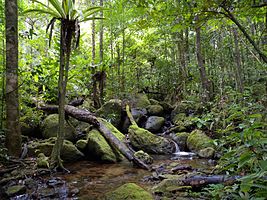
Wildlife crimes in World Heritage sites
28 Apr, 2018
Today, there are five distinct species of rhinos whose ranges’ span central and southern Africa and central and southern Asia. All species are, or have been, declared as…
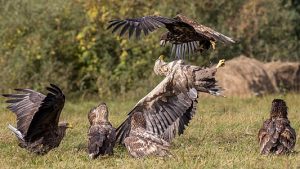
Recovery of bird populations in Great Britain
28 Apr, 2018
Over the past centuries, predators have on average declined significantly, and sometimes drastically, with negative effects on the biosphere. However, that isn’t to say that the field of predator conservation lacks success stories.
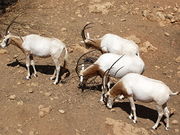
The story of the recovery of the Arabian oryx
28 Apr, 2018
Often called the unicorn of the desert, the majestic Arabian Oryx ranged the interior of the Arabian peninsula for thousands of years before over-hunting in the 20th century lead to its decline and ultimate eradication in the wild by 1972

The European Union (EU) Common Fisheries Policy
28 Apr, 2018
It is the goal of this piece to discuss the European Union’s 1983 Common Fisheries Policy, the ordinance under which all fishing activities within the European Union’s Exclusive Economic Zone are conducted. It will first discuss the impetus for creating the Policy, as well as the various state and non-state actors implicated in its inception. It will then discuss the evidence which indicated a necessity for such a policy, and an analysis of how the CFP functions and how effective it has been in its goal.

Crocodile farming in Papua New Guinea
28 Apr, 2018
Crocodiles have been around on this planet for some 200 million years, but since humans began hunting for crocodile meat and skin post World War II, the wild populations of these species quickly became quickly on the decline. Crocodiles are hunted to be made into luxury items such as leather shoes, handbags, watches, and wallets that are highly sought after and thus hold a high market value
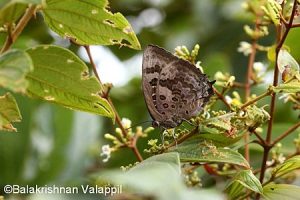
Butterfly and ant interactions in lowland grasslands in the United Kingdom
28 Apr, 2018
The grasslands of the United Kingdom are host to a number of symbiotic relationships between the butterflies of the Lycaenidae and Nymphalidae families and various ant species. Through the early 1900s the extinction rate of invertebrates in the United Kingdom, namely butterflies, has seen a dramatic increase over the extinction rate of vertebrates. A poor understanding of the symbiotic relationship between butterflies and ants has been cited as the reason for their improper conservation
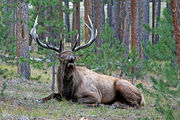
Restoration of ecosystem interactions in Yellowstone National Park, USA, with re-introduction of grey wolves
28 Apr, 2018
Following decades of the disappearance of grey wolves in Yellowstone National Park, in 1995 a reintroduction of this species caused significant alterations both in the present inhabitants…

The story of brown bears in the Pyrenees and compensation for sheep farmers
28 Apr, 2018
The Pyrenees mountain range is one of the only places brown bears live in Europe. There are around twenty bears in the area, most of them from Slovenia, where they were reintroduced as a part of a government strategy. Although the population of brown bears in Pyrenees is diminishing, they are still being held responsible for many issues with sheep deaths.
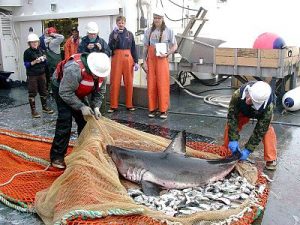
Legal Rights of Sharks along Canada’s West Coast
28 Apr, 2018
For over four-hundred years sharks have been roaming the oceans, adapting to many different marine ecosystems. At one time, there were three-thousand species of sharks, today, Earth’s oceans are home to more than 350 species…
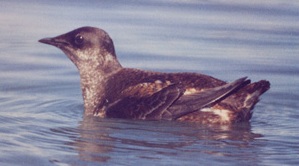
The Opportunities for and Challenges of Saving the Marbled Murrelet
28 Apr, 2018
Brachyranohus marmoratus, commonly known as the marbled murrelet, is a small North Pacific seabird, which is a member of the Alcidae (auks) family. Marbled Murrelet are currently facing troubles of survival. With Their habitat close to British Columbia, we are obligated to conserve and preserve this species. We shall discuss the challenges and opportunities to save the marbled murrelet . Some common challenges the Marbled Murrelet faces are anthropogenic like Oil leakages
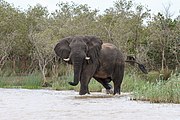
Can China’s ivory trade ban save elephants?
28 Apr, 2018
Elephants, the family of Elephantine and the order Proboscidea, are one of the largest land animals that now living. The elephant is well known for its’ long trunk and huge body size. They can be found in many different habitats, such as forests desert and savannahs. There are two group of elephants, one is African elephants and the other one is Asia elephants.

Pastoralists vs conservationists in the highlands of Kenya
28 Apr, 2018
The highlands of Kenya are currently the location of a widely talked about controversial issue between two groups of individuals, Pastoralists and Conservationists. Pastoralism is a term to describe the agricultural practice in which individuals use to farm and raise livestock…

Should the moratorium on logging since 2002 in the Democratic Republic of Congo (DRC) be lifted and concessions issued for industrial-scale logging?
28 Apr, 2018
The Democratic Republic of Congo (DRC) is located in central, sub-Saharan Africa and neighbored by ten different countries…

The story of Canada’s digital dumping ground
28 Apr, 2018
Every year we contribute exuberant amounts of waste to our landfills. One of the largest global contributors to that waste comes from our electronics, also known as e-waste. In 2016 alone approximately 44.7 million metric tonnes of e-waste were created. By 2020, it is predicted that that amount will increase by 17% and we will create approximately 52.2 million metric tonnes of e-waste annually throughout the world
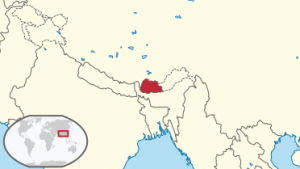
Cultural Keystone Places: conservation and restoration in Bhutan
28 Apr, 2018
Bhutan, a small country between China and India in Southern Asia, is known to the Bhutanese as Druk-yul (which means “Land of the Thunder Dragon”). It is made up mostly of mountainous terrain, but also includes valleys that contain either forests or agricultural land. Additionally, as it is a small and landlocked country there are limited resources to attain clean water.
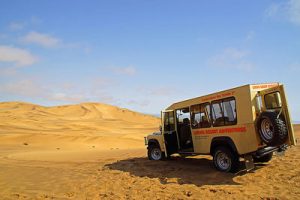
Analysis of Community Based Natural Resource Management (CBNRM) in Namibia
28 Apr, 2018
Community Based Natural Resource Management programs, which aim to involve local people in the management of natural resources, have been implemented in Namibia with mixed results…
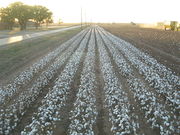
Ecological and social costs of cotton farming in Egypt
28 Apr, 2018
Cotton is the most widespread, profitable non-food crop in the world. Over the past century and a half Egyptian cotton has earned a global reputation as being of the highest lint quality when compared to other cotton products grown elsewhere …

Caring for country: Australian Aborigines and natural and cultural resource management
28 Apr, 2018
The government of Australia has carried out numerous acts to ensure the protection and conservation of Aboriginal land, and culture…

Fort McKay First Nation’s involvement in reclamation of Alberta’s oil sands development
28 Apr, 2018
ocated within the boreal forest of northern Alberta, the Cree, Dene and Me´tis community of Fort McKay lies at the center of a large-scale oil sands extraction area. In the past decade, the influence of oil sands development to Fort Mckay on land, water, air, and health aspects and the communities’ legal and political has led to their participation in the oil sands development.
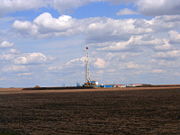
Hydraulic fracturing (fracking): social and environmental costs in Alberta
28 Apr, 2018
Hydraulic fracking is the process of accessing what was considered to be inaccessible natural gas and oil found in shale formations, through the use of horizontal drilling, modern technology…
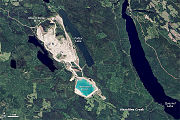
Mineral mining versus local peoples’ rights in British Columbia, Canada
28 Apr, 2018
British Columbia encompasses the greatest section of the Canadian Cordillera mountain range, which is the Pacific section of the North American Cordillera. This mountain range is extremely rich in minerals, which attracts many mining companies to establish extraction projects in the western province. The most common materials extracted, produced, and exported are coal, copper, gold, zinc, silver, molybdenum, lead, and industrial minerals.
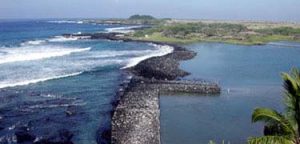
Restoring a part of Hawai’i’s past: Kaloko fishpond restoration
28 Apr, 2018
The Kaloko fishpond, one of the three ponds under protection by the Kaloko-Honokohau National Park is located on the Big Island of Hawai’i. Traditionally, the fishpond served as a nursery for fish to grow in, and when they reached maturity, were then harvested for food. The success of the fishpond’s kuapa (seawall) served as a testament to the Hawaiians’ skill and understanding of their natural land.
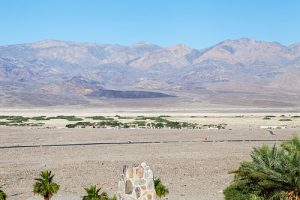
The Timbisha Shoshone Indigenous People and Death Valley National Monument, USA
28 Apr, 2018
Anthropologists have found evidence of an indigenous presence in Death Valley dating as far back as 1,000 years. Therefore, in terms of what can be classified as ‘time immemorial’, the Timbisha Shoshone…
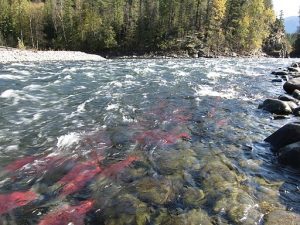
Tribal science and farmers’ resistance: salmon habitat restoration in the American Northwest
28 Apr, 2018
North American salmon have significantly shaped the ecological, cultural, and economic standards of the Pacific Northwest. Before European settlement, salmon played an…
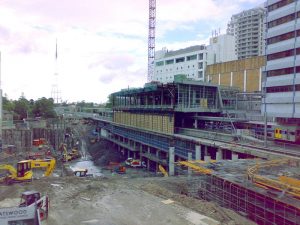
Protection of IUCN endangered species from urban expansion and redevelopment
28 Apr, 2018
In his book On the Origin of Species, Charles Darwin went over the theory of evolution by natural selection. Alluding to Thomas Malthus’ principle of exponential population growth, Darwin explained that…
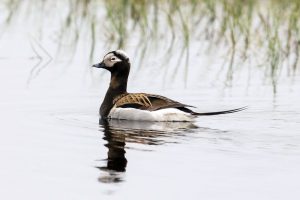
The Christmas or New Year bird count ornithological activity – its values and drawbacks.
28 Apr, 2018
The Christmas or New Year bird counting is an activity that aims to provide data in conservation biology. It is organized by the National Audubon Society, and it makes huge contributions to conservation.
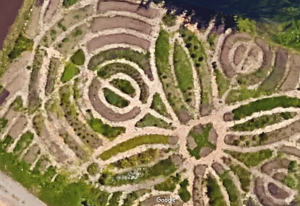
Ethnobotany
17 Mar, 2018
The University of British Columbia aims to advance knowledge through research, teaching, and community engagement. Innovations and emerging areas of excellence are constantly explored to move forward, towards the unknown.
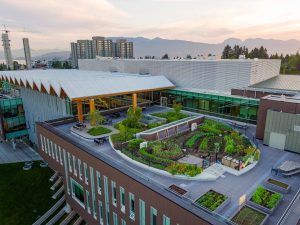
Urban Agriculture
17 Mar, 2018
In 1915, the UBC Vancouver campus was established. The Faculty of Agriculture was amongst its founding units. The original campus plan proposed approximately 200 acres (a large proportion of the campus area at the time)
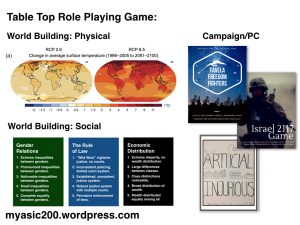
Future World Role Playing Game
8 Dec, 2017
In this project, the exercise is to create the world in which a role-play game will be set. Think of this as an exercise in future studies or futurology, combined with elements of creating the setting for a futuristic novel or film. In essence, students are asked to construct a future world consistent with what we know today. All students will submit two separate individual assignments of 1500 words and 2000 words respectively, detailing their own future world projection. In their groups, students will collectively design their future world (using notes from their solo assignments) for use in the next step of the group assignment: scenario design.
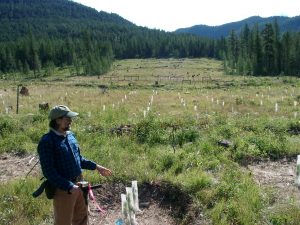
Soil Fauna on the Long-term Soil Productivity Sites in BC
8 Dec, 2017
The forest soils are characterized by an enormous diversity of animal species. Soil fauna play a variety of roles in soil development and the maintenance of soil fertility. Soil macrofauna are defined as organisms bigger than 2 mm in body and includes ants, beetles, spiders, centipedes, millipedes, and earthworms. Although generally less numerous than soil mesofauna, macrofauna can represent a significant proportion of the animal biomass in the soil and play an important role in soil ecosystem function

Soil Fauna and Rangelands
2 Dec, 2017
Soil fauna play important roles in soil development, soil fertility maintenance, and the decomposition of organic matter in grassland habitat. Decomposition and nutrient recycling are essential soil processes to maintain a healthy and sustainable grassland ecosystem. Soil fauna influence bacterial and fungal biomass via grazing, liberating immobilized nutrients, and stimulating further fungal and bacterial activity, as well as, enhancing plant growth. These organisms may also be useful as bioindicators of soil quality.
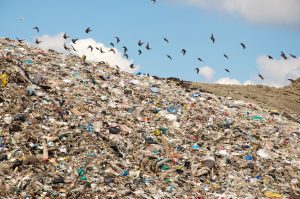
Vancouver Landfill
2 Dec, 2017
Vancouver Landfill, that currently occupies 225 ha, has been in operation since 1966. To date none of the areas of the landfill has been permanently closed. In 2000, a detailed Design and Operations Plan was prepared for the landfill and it includes phase development strategy for progressive closure. An area of the landfill selected for the initial closure consists of 40 ha located in the western part of landfill.

Forest Nutrition Management
2 Dec, 2017
I operate a provincial woodlot license on northern Vancouver Island near Port Hardy. The forest is predominantly old-growth cedar-hemlock, with some second-growth hemlock-amabilis in higher areas. It is all in CWHvm1. One block that I harvested 13 years ago is now looking poor – leader growth is much reduced and many trees have yellowish foliage.

Soil Erosion on Sloping Agricultural Lands in the Middle Mountains of Nepal
2 Dec, 2017
The Hindu Kush-Himalayas are known for their mountains (including Sagarmatha the highest peak in the world), and their diversity of flora, fauna and culture. However, these mountain ranges are also known for environmental issues, including media reports on deforestation, soil erosion and downstream flooding.
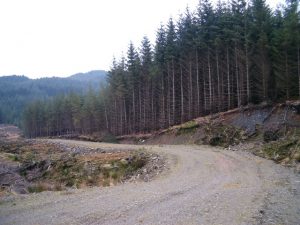
Soil Quality of Forest Landings
2 Dec, 2017
Forest landings are areas of cutblocks where harvested trees are processed and loaded onto trucks. Their construction involves removal of topsoil and leveling. Soil degradation on landings may be so extensive as to completely prevent tree growth;
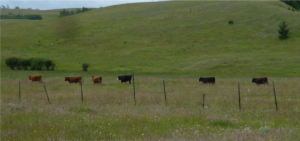
Effects of Long-Term Grazing on Rangeland Soil Quality in Southern BC
2 Dec, 2017
Before the 1970s the traditional grazing system on rangelands in the southern interior of British Columbia (BC) consisted of extended periods of fall and spring grazing without any rest, which resulted in deterioration of the rangeland ecosystems.
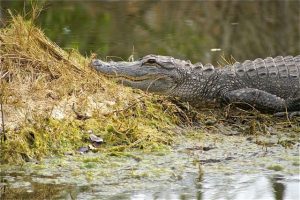
Alligator Skin Handbags
2 Dec, 2017
Alligator and other reptile skins are some of the earliest worn pieces of clothing in history. The use of fur and skins in clothing is a result of the want to use the whole animal, rather than waste part of it. Along with this, the toughness and warmth the skins and furs provided the early wearers of these materials with the promise of warmth and durability. Throughout the years this worry became non-existent to the general population, and those in the middle or upper class with more secure financial means raised the demand for luxury furs and skins
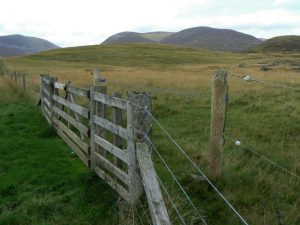
Winter Feeding of Deer in Chicago
2 Dec, 2017
Populations of wild deer in the Great Lakes states are quite large due to feeding and the lack of natural predators. Illinois, Michigan and Wisconsin are good destinations for recreational hunters where hunting is used as one of the means for population control. Deer can be a nuisance in certain areas as they sometimes overgraze and prevent the regeneration of natural vegetation or urban residents’ ornamentals.
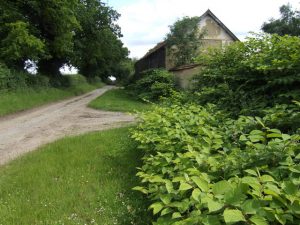
Invasive Species
2 Dec, 2017
Invasive species are non-native plants, often introduced by humans, that are capable of spreading and have negative effects on human health, the economy, and the ecosystems which they invade. Invasive species can cause infrastructure damage and they are notorious for damaging the agricultural industry. The development of globalization has increased the pathways and ease by which invasive species can spread into areas.
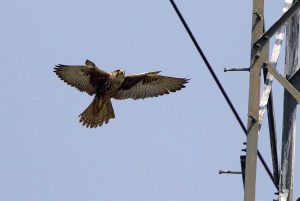
Raptor Nests on Power Poles
2 Dec, 2017
Raptor use of power-line structures has been documented globally for activities such as nesting, roosting, hunting, feeding and establishing territorial boundaries. This creates challenges and opportunities. One challenge is that electrocution of birds on power-line structures is thought to be a cause of decline in raptor populations in some areas, including in populations of threatened species.
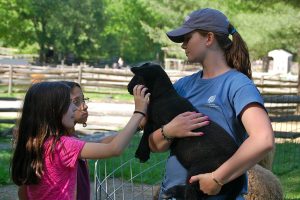
Marine Aquaria & Zoological Gardens
2 Dec, 2017
Captive animals in zoos and aquariums are taken form their original habitat they rely on, and then are put into an artificial environment, which are considered to be suitable for them to live in by human beings. This happens all around the world, because the huge profit brought by numerous tourists in zoos and aquariums, and for the sake of education. In fact, the earliest zoo was discovered in Egypt in 35th century BC, when the largest Egypt urban centre was built.
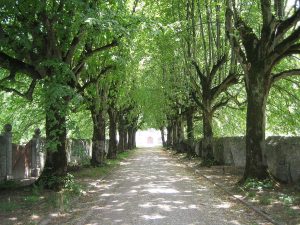
How Street Trees Can Save Our Cities
2 Dec, 2017
Cities around the world are looking for ways to improve the livability of their cities and street trees are a common and important remedy for urban planning departments. The initial appeal of street trees is the beauty they can bring to an area that could be devoid of non-concrete materials. However, street trees can also serve a community beyond the aesthetics of greenery within an urban space, as agents of more practical contributions to the health of the city.
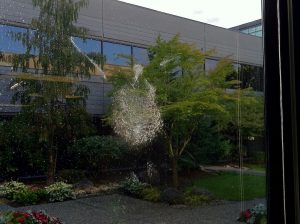
Urban Architecture To Aid Bird Conservation
2 Dec, 2017
Bird species conservation in urban ecosystems urban landscapes is a potent issue with the exponential increase of the human population and the expanding urban settlements being built around the world. Naturally, countries with higher development rates have larger numbers of high-rise buildings and establishments that result in urban problems for birds. Moreover, this issue is more pertinent in the metropolitan cities that are densely populated and have advanced infrastructure that interferes with the flying patterns of birds.
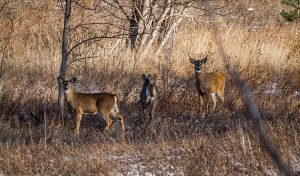
Urban Deer Feeding in BC
2 Dec, 2017
Through this wiki page, examinations of possible outcomes of feeding urban deer in Central/Western British Columbia are performed. Possible outcomes include: An increase in deer/related automobile crashes, an increase in poaching, the spread of disease, especially Chronic Wasting Disease, change in deer eating habitats, which may result in unhealthy trends, and ecological effects that result from deer changing a primary food source.
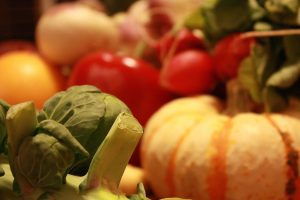
Insistence on Cosmetically Perfect Fruits & Vegetables
2 Dec, 2017
Cosmetically Perfect Fruits and Vegetables meet aesthetic standards of size, shape, and are free of physical blemishes. Produce that does not meet these standards is often thrown away, and can be classified as either food loss or food waste. Food loss is defined as the edible food that is lost throughout production, postharvest, and processing, whereas food waste refers to edible food lost at the end of the food chain due to behaviour of retailers and consumers.

Octopus Fishery Management in Madagascar
20 Nov, 2017
Madagascar is credited with being amongst some of the largest islands in the world and is located just southeast of Africa in the Indian Ocean. It is an island with incredible biodiversity, and unsurprisingly, the fisheries in Madagascar are a big contributor to Madagascar’s economy. Octopus fishery management in Madagascar provides relevant evidence of the economic benefits of local fisheries management and their ability to promote community engagement in broader marine management.

Effect of Variable Retention Harvesting on Soil Microbial Communities in Coastal BC Forests
19 Nov, 2017
Soil microorganisms play important roles in regulating key forest ecosystem processes, such as nutrient cycling and organic matter decomposition. Living vegetation and soil microbes interact in complex ways,
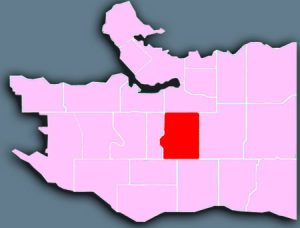
Regrounding Riley Park: a Foundation for Sustainable Soil Management
19 Nov, 2017
Riley Park is located near the southeast corner of Ontario St. and 30th Ave in an area of Vancouver that is rapidly growing in population and increasingly in need of usable green space for multiple purposes. Subsequent to …
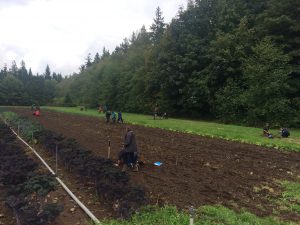
Soil Fertility Assessment for the UBC Farm
19 Nov, 2017
The UBC Farm is a 24 hectare student-driven, model farm located on the University of British Columbia’s Campus in Vancouver, Canada. The UBC Farm has developed a program …
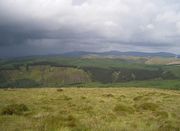
The Re-Wilding Movement in the Heart of Wales
12 Oct, 2017
The Cambrian Mountains, once a striving natural land, has been overwhelmed by harsh agricultural practices which triggered a shift in native vegetation as well as habitat loss. Located in the heart of Wales, the Cambrian Mountains is home to farmers who raise sheep, a traditional source of protein and wool, through grazing practices that have left the land barren of natural vegetation. As George Monbiot describes it, the Cambrian Mountains have been reduced to a desert to support agricultural practices that are of small influence. This unprecedented shift in vegetation and habitat loss has gained the attention of the Welsh government and non-government organizations to collectively work with farmers in creating a sustainable management plan to revitalize the Cambrian Mountains.

The Opposition of the Standing Rock Sioux to the North Dakota Oil Pipeline
12 Oct, 2017
The Dakota Access Pipeline (commonly referred to as DAPL) runs for 1,172 miles, starting in the Bakken and Three Forks Formations and continuing Southeast through South Dakota and Iowa, ending in the Gulf Coast Refineries in Pakota, Illinois. The Bakken and Three Forks Formations, the point where Saskatchewan, Manitoba, North Dakota and Montana meet, have an estimated 7.4 billion barrels of oil and 0.53 billion barrels of natural gas trapped underground. In addition to crossing over four state borders, the proposed pipeline route will cross under the Missouri and Mississippi Rivers as well as a section of Lake Oahe, located half a mile from the Standing Rock Sioux Reservation border.
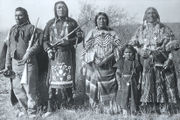
Indigenous Homelands in Yellowstone National Park
12 Oct, 2017
During the era of colonialism, with the emergence of conservation and preservation movements, Yellowstone National Park (YNP) was created. This park was created to protect a valuable ecosystem and promote the wilderness conservation movement. However the creation of this park affected several stakeholders and created several issues over land rights, sovereignty, and environmental management. The major affected stakeholder that will be discussed are the traditional Indigenous people of the Yellowstone area, how they initially were displaced from their land with the creation of the park to present day issues they face at the cost of conservation.
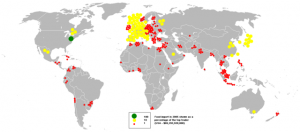
Dietary Dependence on Foreign Crops
12 Oct, 2017
People around the world are now more dependent on foreign crops than ever before. This substantial change in production and reliance on foreign crops is partly due the fact that not all crops can be grown in the same climate, and partly due to economic incentives for developing countries to sell their products on the global market. Currently, the dependence on foreign crops is largely due to the decreased value of national currency for exporting countries, cultural supermarket norms in developed countries, and food trends that increase the intensification of monoculture cash-crops. Additionally, as the incomes of developing countries increase, so too does their ability to acquire larger and more exotic food supplies.

Environmental Impact of Meat Consumption
12 Oct, 2017
Most cultures in the world have embraced a meat-eating lifestyle, as has been the case since agriculture became a prominent food supply thousands of years ago. Modern agriculture is now the number one contributor to a variety of factors that impose hazards to the environment, including and not limited to, an increase in rates of methane and CO2, overconsumption of water, overuse of land resources, waste production, water and air quality degradation, deforestation, and species extinction. In particular, the United States has the second highest rate of meat consumption for any given nation at 198.51 lbs per capita per year, falling just behind Australia at 198.87 lbs. With a population of 319 million people, the United States is by far the greatest consumer of meat in the world.
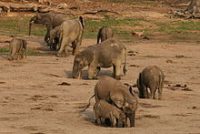
Decline in African Elephant Populations
12 Oct, 2017
For many decades, statistics have shown a significant decline in African elephant populations due to a lack of regulation. Governmental corruption and political instability in Sub-Saharan African countries allowed the ivory trade to occur for centuries. Lack of regulation contributed to the continuous degradation and exploitation of natural resources. The current decrease in elephant populations is primarily due to illegal poaching, demand for Ivory products, and factors associated with human population growth. Curbing illegal poaching of elephants for ivory depends on a decrease in the demand for such priceless products. Secondary causes of population decrease include habitat fragmentation, as well as the alteration of age and genetic distribution within existing elephant populations. This issue has severe ecological repercussions, as African elephants are keystone species within the the continent’s landscapes.

Yasuní-ITT Project in Ecuador
12 Oct, 2017
The Yasuni-ITT Initiative aimed to prevent drilling in the Ishpingo-Tambococha-Tiputini oil field in Ecuador. This would protect biodiversity, maintain indigenous peoples’ rights, and eliminate 400 million tons of CO2 emissions. The Yasuni-ITT proposed that the global community contribute roughly $350 million annually for ten years to fund employment in sectors such as renewable energy, while respecting biodiversity and social equality. In return, Ecuador would provide ‘Yasuni Guarantee Certificates’ corresponding to the avoided CO2 emissions, which could be used on the European Union’s carbon credits market. This model introduced a global method of jointly managing environmental costs, however studies indicated that the international community was unlikely to financially support communities wishing to strand local assets for global benefit. The Yasuní-ITT Initiative ended in 2013 when it was found economically unable to follow through on its plan.
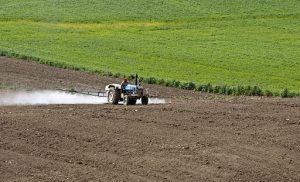
Pesticide Poisoning
12 Oct, 2017
While in the short run, pesticides seem very beneficial for agriculture including crop life and dealing with unwanted or invading vegetation, after closer inspection at the effects on plant, animal, and human life, it becomes very clear that the negative effects such as extreme illness or death, heavily outweigh the positive effects. Pesticides are very common in agriculture today, most commonly used to protect crops from widespread disease and pests. As a result, humans have enjoyed the benefits a healthy crops with and lack of poor harvesting seasons. When humans started farming in Mesopotamia 10,000 years ago pesticides were not commonly used. The first evidence of pesticide use was about 4,500 years ago by the Sumerians and 3,200 years ago in China
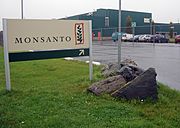
Monsanto and Terminator Seeds
12 Oct, 2017
Monsanto is a corporation which specializes in creating GMO (genetically modified organism) technology and genetically altering seeds, especially soy, to improve the crop yield. Their “terminator seeds” are modified to only last one generation to ensure that farmers have to annually purchase new seeds from the organization. This method poses an environmental concern being that it significantly reduces crop diversity and introduces many GMOs into the earth.
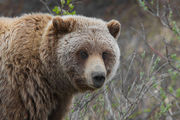
Grizzly Bear Conservation in BC
12 Oct, 2017
Grizzly bears (Ursus arctos) are a major representative of the wild. Grizzly bears usually weigh 136-680 kilograms and the males are usually larger in size. They belong to the same family as polar bears and black bears. The correct scientific name is brown bear, however, they are referred as grizzlies due to distinct lighter colour hair on their back which gives them “grizzled” appearance. Grizzly bears have a hump on their shoulders. This is due to their mass of muscle which is specifically designed for digging. It is easy to distinguish black bears and grizzlies by looking at their faces: black bears have straight-faced profile while grizzlies have a dished-face profile. In the colour range, Grizzlies are usually dark brown, but can vary from light cream colour to black which is mainly affected by their genetics. In addition, grizzlies have relatively longer claws than other species of bears, designed for digging. Grizzlies can adapt to cold environment with the help of their thick fur. Also, their long claws and powerful shoulders help them create winter dens and scavenge for food.
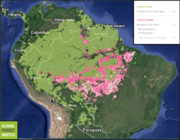
Illegal Logging in Brazil
12 Oct, 2017
Illegal logging in the Brazilian Amazon is a problem that deals not only with the environment, but also with various economic, social, and political pressures. Illegal logging that leads to deforestation is an issue that extends to local, national, and international levels. This page will describe the background of illegal logging in Brazil, its effect on the environment and economy, and the actors that affect it and are influenced by it.

Hydraulic Fracturing
12 Oct, 2017
Since the Industrial Revolution, world energy consumption, traditionally supplied by combustible organic material, such as oil, coal, or natural gas, has rapidly increased. As conventional sources of fossil fuels are depleted, hydraulic fracturing (“fracking”), a controversial method of extracting natural gas, has become a popular unconventional approach to fossil fuel extraction.
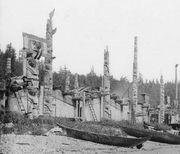
Gwaii Haanas National Park Preserve
12 Oct, 2017
Gwaii Haanas Park reserve and Haida Heritage site is an archipelago of 138 islands that lies 130km off the coast of mainland British Columbia; known simply as Gwaii Haanas, this area is protected as both a National Park reserve and an important Heritage site for the Haida First Nation. The islands are a very popular tourist destination due to the large temperate rainforests that house a vast diversity of animals. The Haida First Nation have a rich history on Gwaii Haanas, ranging back over 12,000 years, and even have a UNESCO World Heritage Site at one of the village sites on the islands.
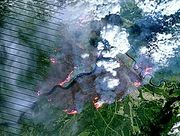
Fort McMurray and the Fires of Climate Change
12 Oct, 2017
Fort McMurray, located in a beautiful service area with vast oil sands deposit in northeast of Alberta, is surrounded by peatlands and boreal forests of aspen and spruce. Though normally very wet, Fort McMurray is relative dry and hot in summer, and its weather is becoming more extreme because of climate change. With a low moisture content and a high volume of resin for defence against disease, stems of trees in boreal forests are highly flammable. Beginning southwest of Fort McMurray, Alberta on May 1st, 2016, the wildfire swept through forests and communities and destroyed around 2,400 buildings in only two days, resulting in over 8,000 residents to leave their homes. Ultimately, it was under control by July 5th, 2016. The fire, reported spreading cross 590,000 hectares, is the costliest disaster in Canadian history. The intense forest fire has a profound impact on local environment and ecology. About 500 species of wildlife lost their habitats or were in danger due to the fire. Many wastes such as ash and rotting food were produced in the burning process. The fire also released a large amount of CO2 and other toxic contaminants including heavy metals and PAHs deposited on trees and soils.
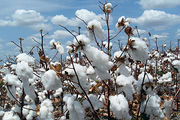
Ecological and Social Costs of Cotton Farming
12 Oct, 2017
In today’s age, cotton is one of the most versatile crops that the earth has to offer. Many of us are familiar with the usage of clothing in cotton, but cotton is also used in beauty products and food products as well. Look at the clothes that you are wearing right now, a majority; if not all of it is made out of cotton material. Cotton is favorable in clothing because of its softness, durability, and insulation characteristics. The leftover cotton seed can be used to make cottonseed oil and cotton meal. The oil can be used in cooking, such as deep frying foods or used in salads as a dressing. If not used in cooking, cottonseed oil can also be used to make tons of oil-based products such as soap, candles, or even cosmetics. Cotton meal is rich in protein and is used for human consumption or for animal fodder. These cotton products and byproducts are used by people all around the world, the amount of cotton consumed must be insane! The growth of cotton takes up approximately 2.5 percent of the world’s cultivatable land across 85 different countries. During the year of 2015 to 2016, the world consumed a staggering amount of 24.2 million metric tons of cotton. This includes uses of cotton in all its forms. However, with the good comes the bad and although cotton has a ton of benefits, it also carries many social and environmental drawbacks.
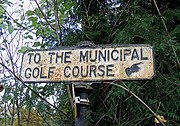
Golf Course Conservation Management
12 Oct, 2017
Urbanization is a trend that continues to remain consistent and dominant in our world today. Countries continue to expand infrastructure and grow industry in order to meet both global and national demands. As countries develop, rural landscapes are continually transformed into urban settings. In 1950, only 30% of the population lived in an urban setting compared to today where over half of the population resides in cities. This statistic continues to rise which sparks many questions dealing with conservation. Primarily, conservationists examine how to find new avenues of protecting the environment within the confounds of an urban setting. One possibility lies within golf courses since many urban cities have various golf courses within a close vicinity of them. While nothing overcomes the conservation value of an untouched piece of natural land, are golf courses the next best option? Being that golf courses often try to display and showcase natural beauty, do they also help conserve nature? While there is value to be found in golf courses, most of it is not actualized and remains as potential.
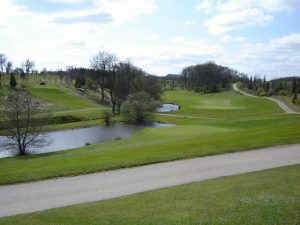
Suburban Golf Course
12 Oct, 2017
There is much debate within our society today about whether or not golf courses provide conservation value. While some articles portray golf courses as improving conservation value by creating habitat for sensitive organisms, others sources are cynical in their outlook towards the conservation value of golf courses. The naysayers suggest golf courses remove the habitat of the natural organisms, replacing it with habitat that only suits common, urbanized species. Many of these differences in opinion stem from both sides understanding about what defines ‘conservation value’ since there are various aspects that contribute to it. Many of these aspects work independently from each other; thus, it is very difficult to come up with one definition for the term ‘conservation value.’ Despite this, most sources do agree that improvement on conservation value stems from improvements in management decisions.
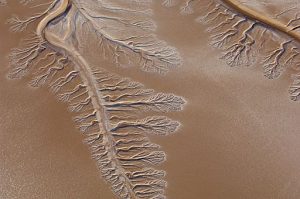
Cultural Keystone Places
12 Oct, 2017
The Colorado river delta was once a thriving and biological productive region, which spanned two million acres across Northwestern Mexico. However, by the middle of the twentieth century, the Colorado river began to be diverted and dammed for irrigation, triggering the collapse of the extensive delta ecosystem. The Colorado river spans from the Rocky Mountains in Wyoming through Western Colorado, New Mexico, Southeastern Utah, Nevada, California, and Arizona, eventually draining into the Pacific Ocean through the Gulf of California in Mexico. There are fifteen dams on the main tributary of the Colorado river. Since the 1963 construction of the Glen Canyon Dam, the last 100 miles of the river rarely reaches the ocean; resulting in a barren delta, reduced to a tenth of its former self.

Biofuels
12 Oct, 2017
Biofuel is the product of the refinement of plant biomass which can then be burned for heat or light energy. It is made of organic matter, either directly from plants or indirectly from domestic, industrial or commercial wastes. There are different types of biofuels. Before fossil fuels, firewood was the primary source of fuel domestically, especially for heating and cooking before the 19th century. Materials such as wood, hay, straw, and dung are collected, dried, and then burned as a fuel source. The amount of energy that a well-seasoned firewood can produce is approximately 15 MJ per kg, which is one-third to one-half of what fossil fuels can produce. Even today, nearly 2.6 billion people, primarily rural areas of developing countries, still depend on firewood as an energy source.

Teacher Blogger
10 Oct, 2017
Sarah has recently begun her first contract as a certified teacher at a high school in Vancouver. The position allows her to teach Physical Education and coach one of the school’s basketball teams, which is exciting for her, as she is able to bring together her love of working with students and her passion for fitness. She is not sure, however, that she will teach for her entire career. In fact, she thinks that in the future she might want to work as a personal trainer or run her own personal training company. She has thought about doing this since she began working part time as a fitness coach a few years ago to help her pay her tuition at UBC, something she is continuing to do as a new teacher to help pay her student loan debt.

Snapchat Mishap
10 Oct, 2017
After being encouraged to take advantage of communication apps as a teaching tool with her high school Social Studies classes at the beginning of her practicum, Jessica decided to make teaching accounts on a few different apps and websites in order to engage her students. Having looked her up online prior to the start of her practicum, Jessica’s school advisor suggested that, if she wanted to use social media, she should probably make her current accounts private and consider creating new accounts to use with her classes. After discussing the idea and getting permission to create school-related social media accounts on Facebook, Twitter, and Snapchat with the school administrator, Jessica made the accounts under her name Ms. Yu.

Rate My Teacher Candidate
10 Oct, 2017
After hearing stories about teachers being disciplined or criticized for online posts, Mateo decided not to use social media during his practicum. He was not a regular user of social media anyway, having only a Facebook account that he posted on occasionally. Between using the highest available privacy settings and continuing to post very little from the account, Mateo felt confident that he was unlikely to run into any problems related to social media while teaching. While completing his practicum, he knew other teacher candidates who had multiple social media accounts and were more active online. They would sometimes express concern over the potential for certain posts or pictures to have a negative effect on their reputations as teachers and Mateo was grateful not to have the same worries.

Questionable Comments
10 Oct, 2017
Before beginning their practicums, a group of teacher candidates who were placed in the same school to teach created a private Facebook group and a group chat through text so that they could share resources, discuss their experiences, and plan times to get together outside of school. Because they were all trying to monitor their use of social media in order to avoid breaching any policies, they decided to communicate through these private groups, as opposed to posting on any public profiles. Recognizing that they could help one another succeed by monitoring their social media interactions, all of the teacher candidates agreed not to post comments about each other or share any photos from their parties without asking for permission, especially if they were drinking alcohol or wearing revealing clothing that they would not wear while teaching.

Pop-Up Problem
10 Oct, 2017
Shira is always looking for creative ways to engage the grade 3 students she is teaching in her practicum. While searching online for fun ideas to incorporate into one of her upcoming art classes, she comes across a lesson plan that involves painting using toy squirt guns, which she thinks her students would enjoy. While her students are working on their math problems, Shira decides to search for inexpensive squirt guns she can purchase to use with the lesson. She uses a personal laptop that she brought to school because her school advisor is using the classroom computer for her own work.

Dating App Debacle
10 Oct, 2017
Knowing that decisions about social media use can be difficult for teachers, new teacher candidate Jonas has taken action with regards to his social media accounts in an attempt to avoid crossing any professional boundaries during his practicum. He keeps his Facebook and Instagram accounts set to private and he has started using pseudonyms, as he knows that privacy settings on social media platforms can change without his knowledge. He has also explained to students who have asked to follow or “friend” him on social media that he will not do so, as he believes that communication between a teacher and student through personal social media accounts would not be appropriate.
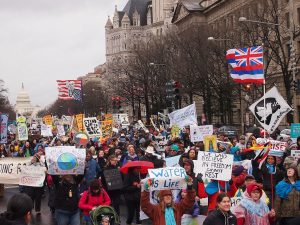
Standing with Standing Rock
6 Oct, 2017
Stand with Standing Rock is a grassroots social justice movement that began in North Dakota, United States. The movement began as activism against the Dakota Access Pipeline that was rerouted through Native American lands, in particular, the Standing Rock Indian Reservation. It began as a fight to protect sacred lands and the peoples’ right to water quality – as the pipeline is routed through the tribe’s water source. The pipeline disturbs sacred sites, infringes on past treaty promises and tribal sovereignty, and is a significant danger to water supply. However, the Stand with Standing Rock has taken on larger significance as a conduit for global climate change.

SlutWalk
6 Oct, 2017
As globally conscious GRSJ students we are all aware of the current issues of gender inequalities that exist within our societies. Therefore we are also aware of the current schools of thought that are being discussed within the modern feminist movement. We are in a moment of empowerment, third-wave feminism, which is abandoning the notion of the “victim feminist” and attempting to redefine the female role within society. [1] Women should no longer be seen as victims of the patriarchy but as individuals who are free to make decisions about their lifestyle without fear of prejudice. Unfortunately our contemporary culture is still saturated with misogynist ideologies that continue to oppress gender minorities. In this particular circumstance we will be discussing, these manifest themselves as the normalised violence towards women.
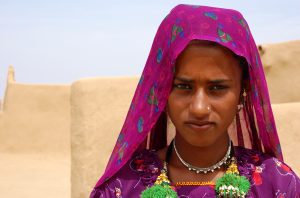
Muslim Women’s Rights
6 Oct, 2017
Since the emergence of feminism in the 19th century, there have been efforts to expand the meaning of feminism, which has led to the development of “feminisms.” Feminism as a formal movement first emerged in the 19th and early 20th century primarily by Western women passionate about women’s suffrage and overturning legal obstacles to gender equality. By the 1960s, another wave of feminism began in the US, and later spread throughout the Western world. This second wave broadened feminist concerns by including sexuality, family, the workplace, reproductive rights and legal inequalities.

Black Lives Matter
6 Oct, 2017
Black Lives Matter is a global social justice activism movement that began in the United States and has since spread around the globe. The movement seeks to attain racial justice for African-Americans and those who identify as black. Activists who participate in the movement aim to bring an end to violence and systemic racism aimed against black people. Since its inception as a hashtag, it has transformed into a full-fledged movement that manifests on and offline, and it has expanded from being a response to police brutality to encompassing all types on injustices faced by black people, including in the realms of education, the criminal justice system, and class relations.
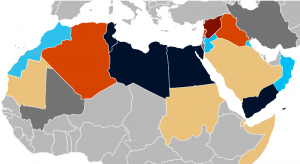
Arab Spring
6 Oct, 2017
The Arab Spring refers to the uprisings that occurred in the Middle East during the Spring and Summer of 2011. These demonstrations occurred in Tunisia, Egypt, Morocco, Libya, Yemen, Bahrain, Syria and Jordan. Democratization usually occurs in geographical clusters, due to the shared culture and language. Grand discusses the transmission of democratic ideals in geographic regions, “When one country overthrows a dictator, citizens in other countries that share a common language—or at least commonalities in language and culture—are more likely to hear about it, view the example provided by their neighbor as relevant to their own condition, and feel empowered to take action because of it. Improvements in communications technologies have only accelerated these effects.”

Anti-Slavery International
6 Oct, 2017
Anti-Slavery International is a non-governmental organization (NGO) that exclusively works to eliminate all forms of slavery. Founded in 1839 by British abolitionists, it is the world’s oldest human rights organization. It is a charity and lobby group that has consultative status with the UN Economic and Social Council, participatory status with the Council of Europe, and membership in the International Labour Organization Special List of NGOs.

Act Up New York
6 Oct, 2017
Human Immunodeficiency virus (HIV) once contracted is a life-long condition. This virus attacks the body’s immune system. More specifically, HIV attacks CD4 cells (T-cells) that help the immune system fight off infections. If left untreated, the lack of T-cells due to this attack results in the weakening of the body’s immune response.
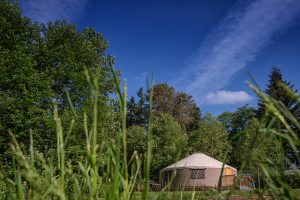
UBC Farm through a Sustainable Lens
23 May, 2017
We use the University of British Columbia Farm as a case study to demonstrate sustainable design approaches, measures, and practices. The ecosystem approach to sustainable design will be explored, using the Farm as the ecosystem in question.

Illegal logging in Indonesia
18 May, 2017
Since the onset of the Indonesian economic crisis in 1997, illegal logging has increased across the country. This case study will illustrate the problem of illegal logging broadly in the national context and focus at the local level of Kalimantan, with village loggers.

Illegal logging in Cameroon
18 May, 2017
While Cameroon has established a formal system of forest enterprises that are legally registered, rates of illegal logging in the country remain high. A 2002 study conducted by the World Wildlife Fund (WWF) suggests that 50-70% of timber is sourced in this manner.
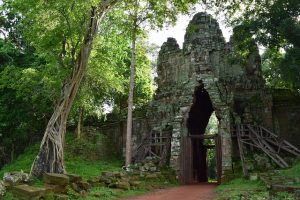
Illegal logging in Cambodia
18 May, 2017
From the early 1970s to the mid-1990s, the forest cover in Cambodia decreased sharply from 75% to less than 35%, mainly due to the illegal, but officially sanctioned logging, by the Royal Cambodian Army Forces and Khmer Rouge.
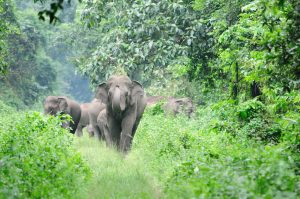
Illegal logging imports in India
18 May, 2017
With a rising population and increasing demand for wood and wood based products in the real estate sector, India is emerging as a major consumer of illegal timber and one of the world’s largest importers of wood-based products. A decline in domestic wood production means that India needs to meet its demands from other sources. In 2012, nearly 20% of timber imports were estimated to be illegally sourced.
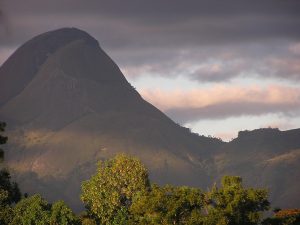
Illegal logging in Mozambique
13 May, 2017
Mozambique endured sixteen years of brutal civil war and now finds itself at a crossroads between conservation and development. This case study will examine the various ways that development and conservation can co-exist in Mozambique, showing that, when done properly, both are possible.
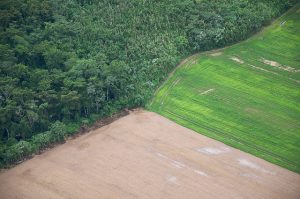
Illegal Logging in the Brazil Amazon
21 Feb, 2017
Brazil is one of the countries with extensive tropical forests and home to 60% of the Amazon rainforest. The country has 27 states with a total land cover of 850 million hectares, where 463 million hectares are estimated to be forested.
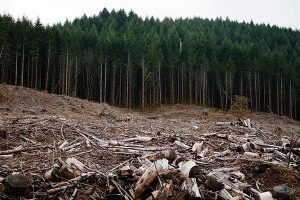
Illegal Logging: Multi Billion Dollar Transactions Hiding in Plain Sight
24 Aug, 2016
There is no common agreed definition of illegal logging. Three perspectives of what constitutes illegal logging: firstly, that of The Royal Institute of International Affairs (RIIA), an international policy analysis institute, secondly, from Global Witness, an international Rights NGO, and thirdly, from the Indigenous Network on Economies and Trade (INET), a Canadian Aboriginal NGO.
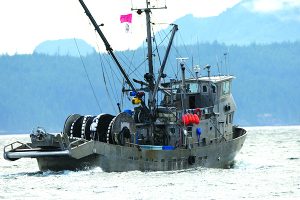
Canada’s Pacific Groundfish Trawl Fishery: Ecosystem Conflicts
24 Aug, 2016
The B.C. groundfish trawl fishery came under attack from ENGOs in the mid-2000s for destruction of the aquatic habitat. This case study examines the negotiations and the degree of success of the world’s first habitat bycatch limitation agreement.

Global Climate Justice
22 Aug, 2016
What distribution of adjustment costs for climate change mitigation is fair, and should be acceptable to the most (important) countries? Are there ways of framing the issue that could be more effective in galvanizing effective action?

The Enbridge Northern Gateway Pipelines: Reconciling Interests
20 Aug, 2016
Is it possible to reconcile the competing interests between the project proponent and those First Nations communities who oppose the project on the one hand and the conflict between First Nations – where some communities oppose the project and others are in support of it?